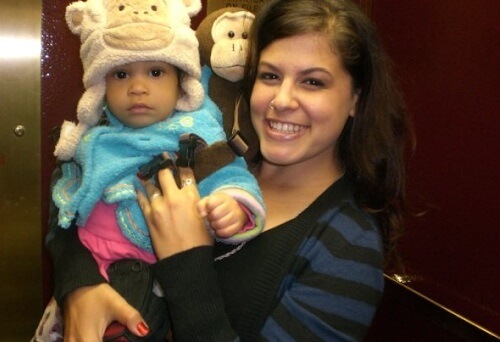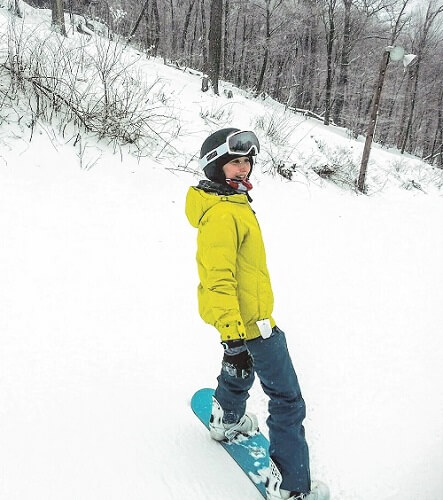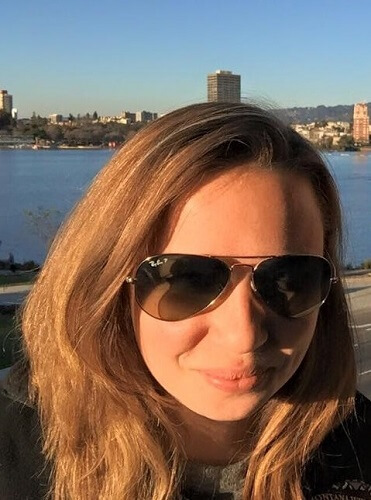Get to Know the La Piana Team: An Interview with Our Project Services Team
This blog post is part of our series getting to know the La Piana staff. This week we sat down with three key members of our project services team:
- Amia Grashin, Project Services Manager, has been with the firm since January 2015 and works out of our administrative office in Emeryville, CA
- Shaquile Coonce, Project Assistant, joined us in October 2015 and is based in Pittsburgh, PA
- Trish Fisher, Project and Operations Associate, started at the firm in November 2015 and also works out of our Emeryville, CA office
Amia, Shaquile, and Trish each contribute outstanding organizational skills, critical thinking, and communications support to our projects with nonprofit and foundation clients across the country.
Shaquile and Trish, both of you worked at nonprofits prior to joining us at La Piana (Shaquile at NeighborWorks Western Pennsylvania and Trish at Swords to Plowshares). What drew you to a career working with nonprofits?
Shaquile: I never really thought of being drawn to a certain sector. I just knew I wanted to help people. If a job in the nonprofit sector helped me to do that, that’s where I ended up. My job at NeighborWorks was in direct services as a financial counselor, so I’d meet with eight different clients a day, every day. It was very fulfilling. I could have just as easily been happy working in another sector, as long as I was helping people.
Trish: Like Shaquile, I always knew I wanted to help people. I was doing corporate recruiting for a while…it was at the end of the recession, and I liked being able to help people get jobs — how it transformed their lives. That eventually moved me into workforce development with Swords to Plowshares.
How have your previous positions, both in and out of the nonprofit sector, shaped your work today?
Trish: My work with nonprofits has included both direct services and resource development experience, so I can understand organizations’ funding constraints and how critical it is to raise funds to support the work. I also became really interested in how to build capacity and deliver innovative programs, which is what a lot of our client organizations are concerned with.
Shaquile: My NeighborWorks experience also included doing financial reports, so between that and working directly with clients, it allowed me to do something different every day — which is similar to what I do now. Sometimes I’m working on reports, sometimes I’m helping consultants or directly interacting with clients. If I wasn’t used to that kind of variety, it might have been a bit of a shock. Needing to respond quickly, shift gears, and switch roles — having had that experience makes it easier.
Amia, you had an established career as an educator when you came to the firm (most recently with Citizen Schools). Have you found ways in which your experience as a teacher and school administrator has translated to your work with consultants and consulting clients?
Amia: In education, there are some things you learn early on. The first is that you need to be able to listen carefully in order hear different perspectives and then be willing to change your approach based on how others learn or are hearing what you are saying. So I know how to respond to different situations…how to be aware of what the gaps are and how to appropriately step in.
As a project services team, we all play different roles for different projects. Sometimes it’s just a small piece and we need to be able to jump in without as much context. Other times, it’s more of a start-to-finish role and we get to be more of a thought partner with the consultants. So we need to be able to read the situation well and gauge the right level of involvement. (Photo: Amia, with her niece)
The other thing is the ability to be diplomatic in difficult situations. There are always diverse people involved — all with different needs, desires, and expectations — and you have to find a way to keep everyone happy and engaged in the experience. That’s something I feel like we do — as a project services team, but also as a firm — we have to keep clients engaged throughout what is often a difficult situation, and also keep them excited about the next steps.
What do you find most rewarding about your current work? Or what have been 1-2 of your favorite projects or types of projects?
Amia: In a way, La Piana Consulting is working to mend glitches in nonprofits and foundations. Having worked in the field, I’ve experienced these problems first-hand. It’s special to be part of helping mission-driven organizations realize greater impact, whether it’s by changing strategies or building new partnerships.
One project I’ve worked on recently is about building stronger partnerships between health care and domestic violence organizations. In our role, we’ve been able to help them build capacity, promote learning, and improve services — and it’s exciting to know that by helping these organizations in this way, they’re in turn seeing better patient and client outcomes.
Shaquile: I agree with a lot of what Amia just said. I really like that although we may not always see the on-the-ground results, we know they’re happening in small part because of the work we do with nonprofits. Some of the projects I’ve found most interesting so far have been mergers and partnerships. There’s one right now where both organizations have just completed the OCAI (organizational culture assessment), and seeing the differences in their current cultures is very interesting.
I had a similar experience in-person; I was there for the first meeting of two organizations considering a partnership, and just seeing how the two groups dressed for the meeting was an indicator of different organizational cultures. It was a window into the sorts of practical issues that are involved in forming partnerships. I also enjoy being able to help with budgets because of my background in finance.
Trish: What’s most exciting to me is working on issues that not only do I care about personally — like there’s a health care for the homeless project I’m helping with right now that is right up my alley — but also that are so timely and immediate. I’m also working on a Latino civil rights project which is really key right now with the elections and Trump’s demonization of Latinos, and it’s so important that advocates strike back and change the narrative.
It’s an issue I’m very passionate about, and it’s such an important time for America and how it treats minorities. It’s really interesting to be part of this client organization’s planning process as it looks at how it is going to combat those negative messages.
What is something that most people don’t know about you? Or what do you enjoy doing when you’re not at work?
Shaquile: Something most people don’t know about me…. Well, the first time I was in an airplane, I jumped out of it! I’d gone skydiving, but I’d never flown before. Going along with that, I really like being outdoors and being involved in extreme sports.
I’ve been part of the motocross scene for the past eight years. Last year, I was in California for a month and helped do some filming for a motocross media company…I actually took some 35mm photos as well. Basically, I try to spend a lot of time outside: hiking, snowboarding, or even just working on my laptop outdoors! (Photo: Shaquile)
Trish: What do I enjoy…I’m a pretty voracious reader. Mainly nonfiction and trying to keep up with the news — and there’s a lot to keep up on! I’m also a vegetarian and I’m passionate about sustainable agriculture and the effects of mass food production on the environment and climate change.
Amia: I’m pretty much an open book, so there’s not much that people don’t know about me. I like to travel and explore around the Bay Area. We live in a pretty spectacular place, so I hike all the trails I can find and eat at all the restaurants I can afford. I’m also a big sports fan.
I’ve found it’s a good way to get out my competitive energy! I play sports, but I’m too competitive to do it for fun. It’s better for me to be a fan from the sidelines. My teams are the A’s and the Warriors. I used to go to see the Warriors for $10, but now it’s hard to afford a nosebleed seat. And I’ll be there at the A’s game in Oakland on opening day.
I can’t help but be curious about your experiences as young professionals in the sector. Do you have any thoughts you’d like to share on what younger people most have to offer and/or most have to learn about the sector? Or are there specific hopes or concerns you harbor about the future of nonprofits and foundations?
Trish: The thing I keep thinking about is there is about to be a major generational shift in the workforce, and there still aren’t enough people anticipating that and doing the kinds of leadership development and succession planning that are going to be needed. There’s also a troubling narrative about Millennials being lazy and wanting to have everything handed to them, and I don’t think that’s it at all. We’re looking for opportunities to grow and develop. Organizations and leaders who have that negative attitude about young people aren’t going to be able to reach them as constituents or develop them as tomorrow’s leaders.
Shaquile: I agree that Millennials get a bad rap. There are reasons it’s a stereotype, but I think that the problem is being misconstrued as laziness when it’s really that organizations aren’t holding that person’s attention. I know that if I’m not given the opportunity to learn something new, I get bored. I think that’s a new concept for people when it comes to work…traditionally, it doesn’t matter whether you’re bored or not — you just do it. But I think our generation wants work to be something we actually enjoy, or at least be a learning experience. I think a lot of us just need to be challenged, and if we don’t get that we’ll leave to go looking for it.
Trish: Also, in today’s economy wages are low — all over, but especially in nonprofits. If you’re coming out of school with $100K or more in student debt, you can’t afford to work in a nonprofit. People going to the nonprofit sector aren’t there for the money, but definitely the fastest way to increase your income is to change jobs. So if organizations aren’t allowing people to move up, of course they’ll leave — this is part of the staff churn you see, like in a lot of the direct service positions that tend to be low-paying.
Shaquile: Even if it isn’t about the paycheck, if there’s not professional development happening, there’s not a reason for Millennials to stay. There has to be something you’re adding to your resume. If it’s not monetary, then a Millennial needs to be able to say “I learned this” or “this is how I’ve grown or progressed.”
Amia: I don’t know that I can speak from the young professional perspective as well as Trish and Shaquile, but I will say that the way La Piana Consulting approaches this work has helped me realize that going into nonprofits isn’t just a “right out of college, I’m going to save the world” phase. It’s important to make the work sustainable and long-term so it can have greater impact. It’s not just about the next great idea or the tech boom, but getting back to what makes a strong community.
Shaquile: I do think there will be a shift in leadership when Millennials are able to assume those roles, because we want purpose and meaning in our everyday work. I’m hopeful that it will lead to more creative leadership in nonprofits. I’m excited about it.
Is there a particular book you’ve read, or a movie you’ve seen, that has really stuck with you? Or if you could have lunch with someone famous, who would it be?
Trish: A few years ago, I read a book called The White Man’s Burden: Why the West’s Efforts to Aid the Rest Have Done So Much Ill and So Little Good, by William Easterly. The book is about how colonialism has impeded the development of the non-Western world. The West has created all these institutions and agencies, like the World Bank, to combat this, but they’ve failed.
The point of the book is that the solutions need to be home-grown and come from the constituencies themselves — they can’t be imposed by outsiders. I think this is something the nonprofit sector always needs to take into account. More organizations are recognizing this and moving from the “savior complex” to learning how to help communities help themselves. It’s important to acquire cultural competency and to first understand the community and the issues at play. (Photo: Trish)
Shaquile: My ideal lunch date is Betty White. She just seems to have such a positive attitude — it just radiates, through whatever she does. Plus, she’s 94 and still accomplishing new goals year after year.
Amia: I’d love to meet Ruth Bader Ginsburg. She’d be the most fun person to have lunch with because you’d learn a ton and leave feeling inspired. I love the amount of media attention she has been getting — she just gets me super jazzed.
Trish: OK, so if I could ask anybody to lunch, it would be Bernie Sanders. We’d probably go to some farm-to-table vegan place in Oakland — I figure he must be down with that sort of thing!





Comment section